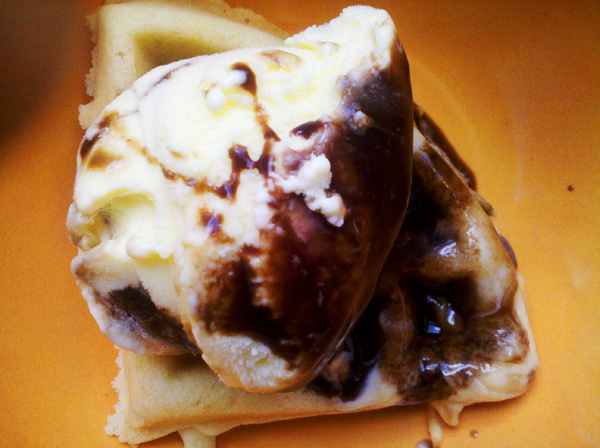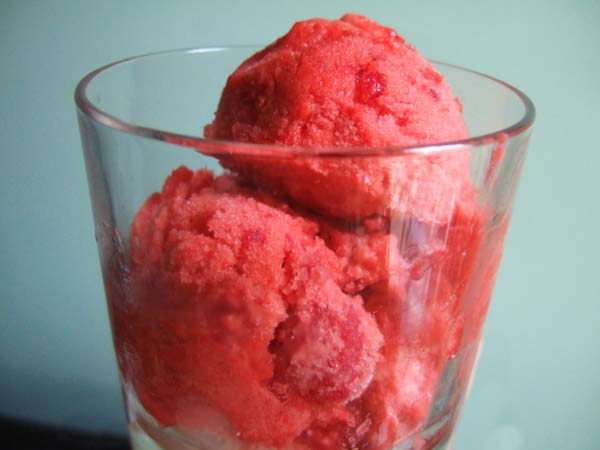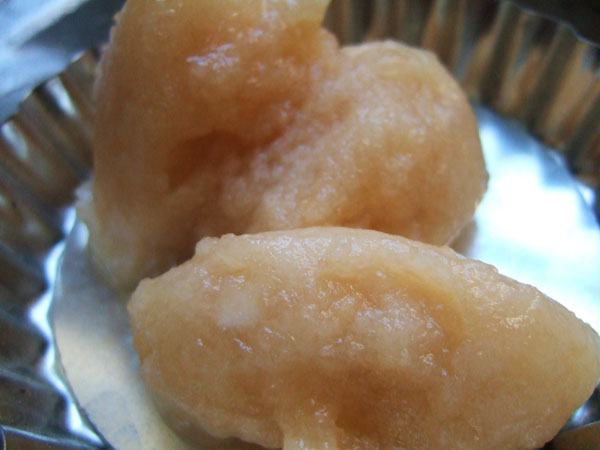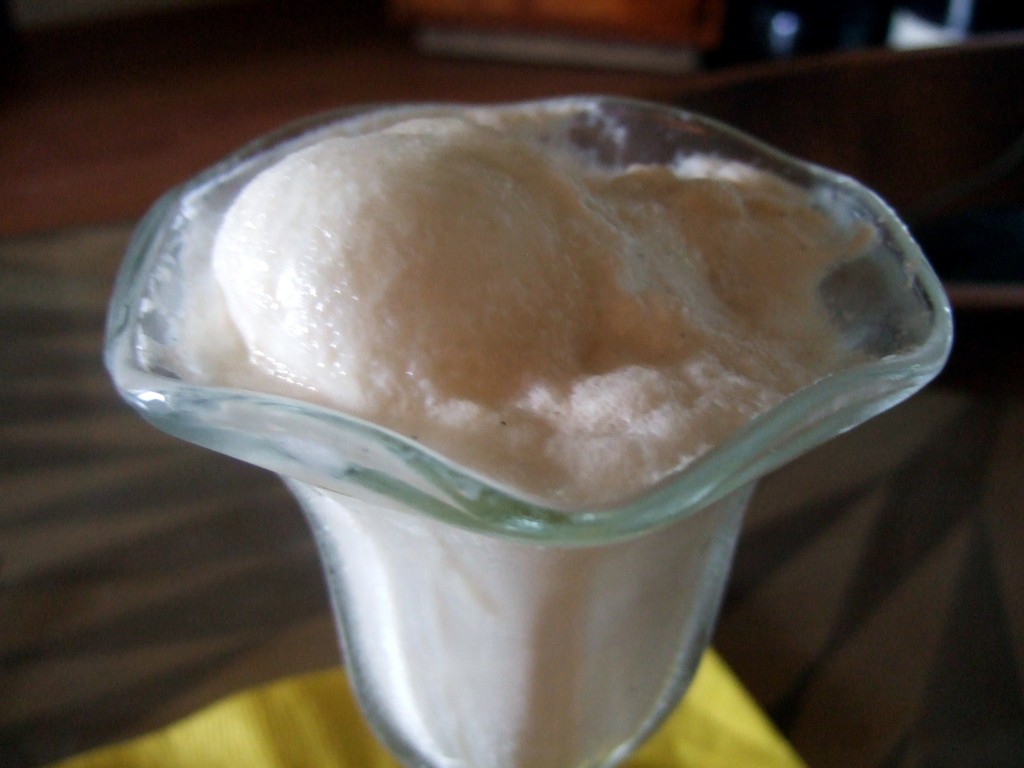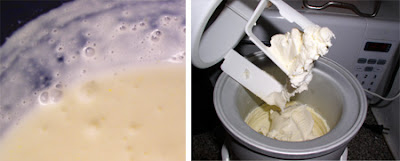Appetite City: Fine Dining. My demo starts at 12:35
Ok. So mine is maybe not the prettiest Baked Alaska. Â And sometimes, I show my colors as still being a young cook. Â Like when I dump my carefully crafted dessert all over the floor. Â Oh well–at least I’m honest about it.
The history of  how Baked Alaska came to be is a little loosey goosey, as origin stories for the most famous dishes tend to be.  We do know that at the turn of the 19th century, scientists discovered the insulatory properties of egg whites.  Cooks seized on this idea, and began creating Baked Alaska-like dishes in the first half of the 19th century.  But Chef Charles Ranhofer, the gifted head of the Delmonico’s kitchen, seems to be the one that perfected and popularized it.  Allegedly,  it was served at a dinner celebrating the purchase of Alaska in 1867, and the popularity of this fantastic new dish sky-rocketed over the next century, peaking sometime in the 1950s.
Making a good, old-fashioned “Alaska, Florida” Â has a hella lot steps, and the end result doesn’t taste that great. Â It was waaaay super sweet. Â I think this is one of those instances when you should look up a modern version of the old classic. Â The dessert is worth cooking up in a simpler form: the combination of hot meringue and cold ice cream seems like magic and will really impress your friends.
***
Alaska, Florida (Baked Alaska)
And Martha Stewart Living.Small yellow cakes
Apricot marmalade
4 bananas
1 qt heavy cream
1 ¼ lb sugar
½ vanilla bean
6 egg whites
1 tsp cream of tarter1. Cake base:  Make your favorite yellow cake recipe in advance, baking it in cupcake tins or ramekins, depending on the size of your ice cream molds.  Remove the cakes from the tins, level the tops, then cut a depression into the center of each cake.  Fill depression with apricot marmalade.
2. To Make Banana Ice Cream:  Mash 4 banana to a pulp; Mix with 1 pt heavy cream and ½ lb sugar.  Stir until the sugar is dissolved.  Put into an ice cream maker until frozen soft.  Pour, or scoop, into a conical ice cream mold until mold is halfway full. Freeze until frozen hard.
3. To Make Vanilla Ice Cream: Infuse ½ a vanilla bean in ¼ cup milk by gently heating on a stove top burner.  Combine with 1 pt heavy cream and ¼ lb sugar; stir until sugar in dissolved.  Freeze in an ice cream maker until frozen soft.
4. When banana ice cream is hard, remove from freezer and pour vanilla ice cream over top, until the mold is filled. Â Return to freezer and freeze until hard.
5. To make meringue:  Combine egg whites, remaining sugar, and cream of tartar in the heatproof bowl of electric mixer, and place over a saucepan filled with water.  Heat over stove-top like a double boiler, whisking constantly until the sugar has dissolved and the egg whites are warm to the touch, 3 to 3 1/2 minutes.  Transfer bowl to electric mixer fitted with the whisk attachment, and whip starting on low speed and gradually increasing to high until stiff, glossy peaks form, about 10 minutes.
6. Preheat oven to 500 degrees. Â Unmold ice cream, and place on top of cake. Â Fill a pastry bag with meringue; encase ice cream and cake in meringue
7. Bake in a 500 degree oven for 2 minutes. Â Serve immediately
***
Be sure to watch the episode to see me demo the whole thing, from start to finish!
